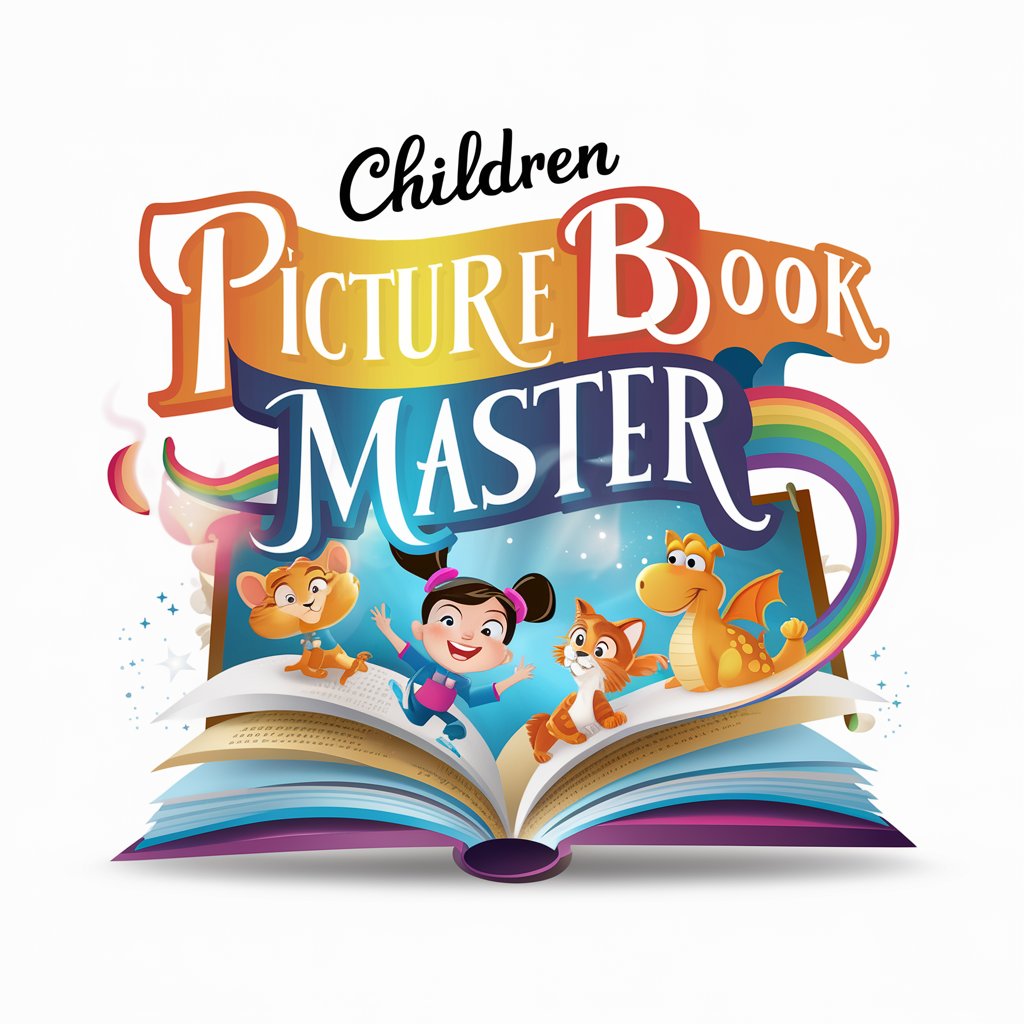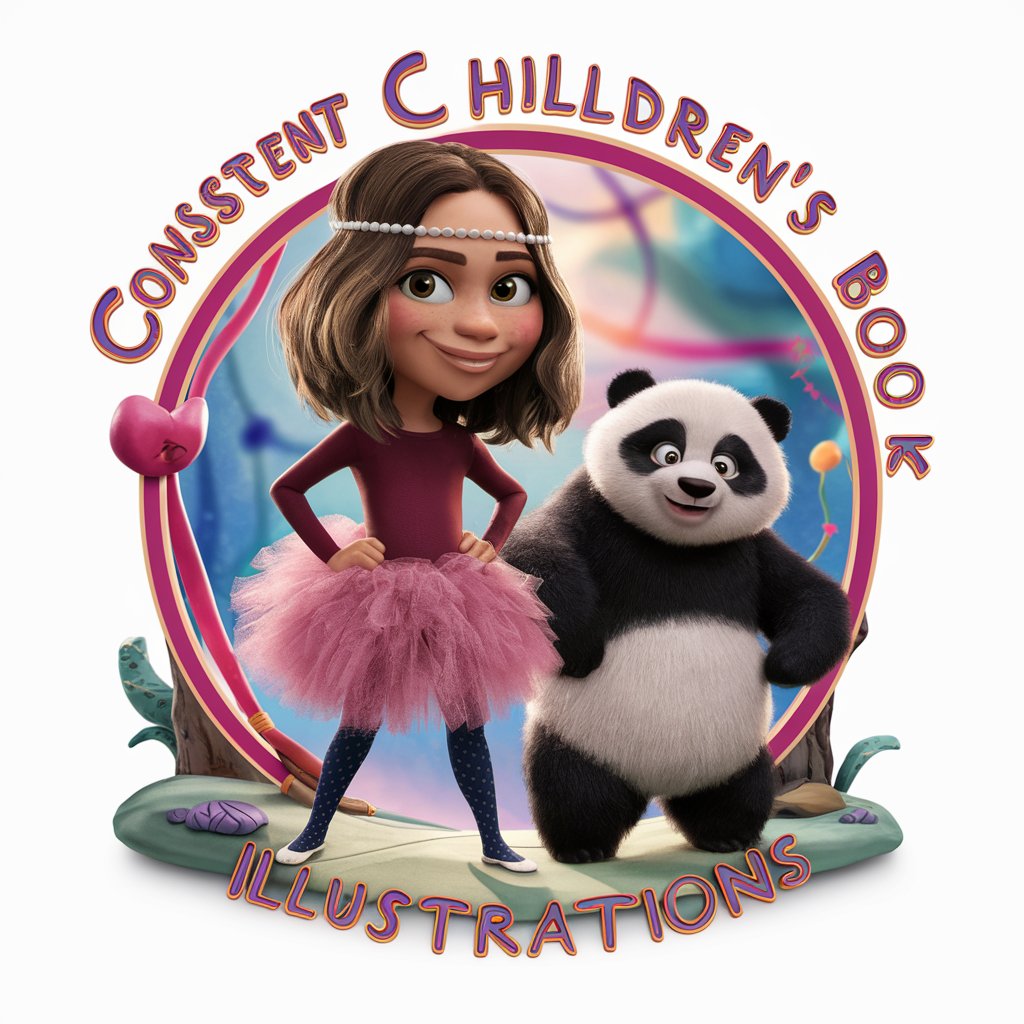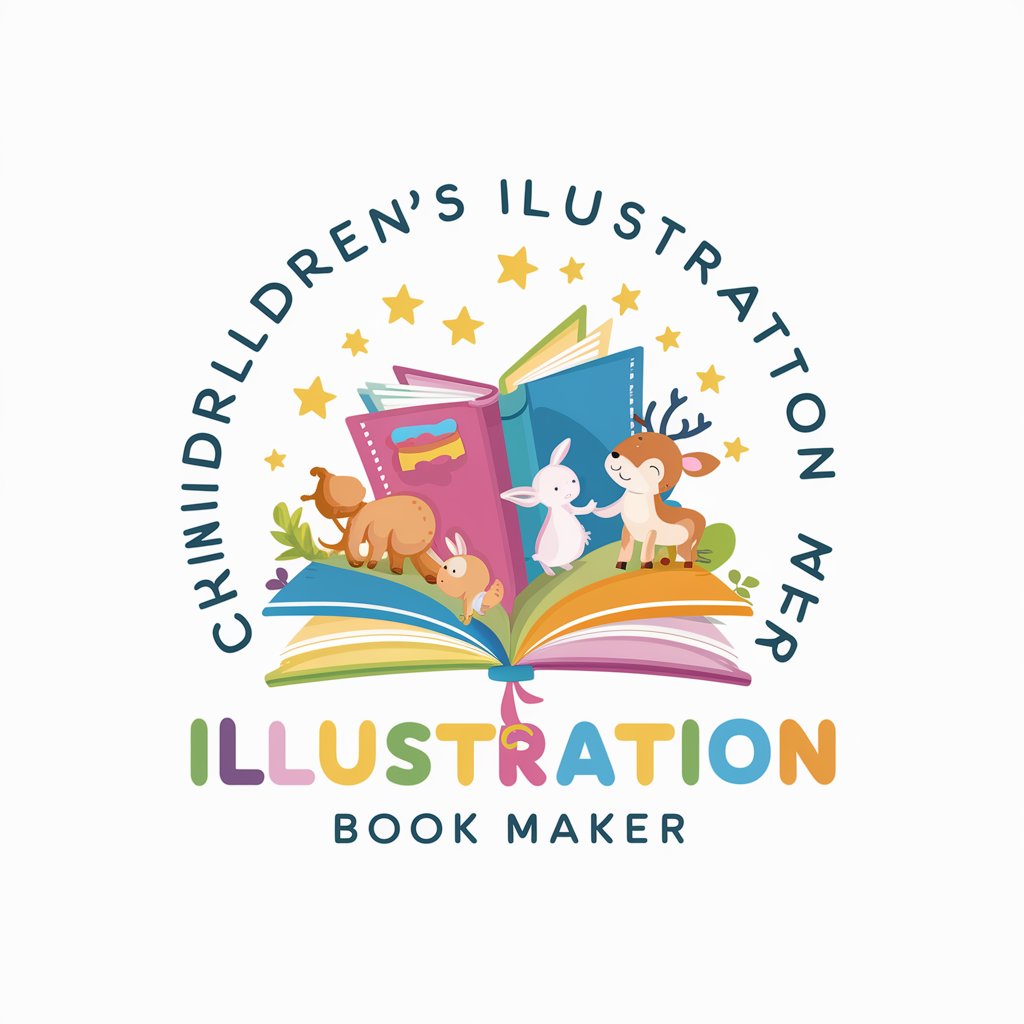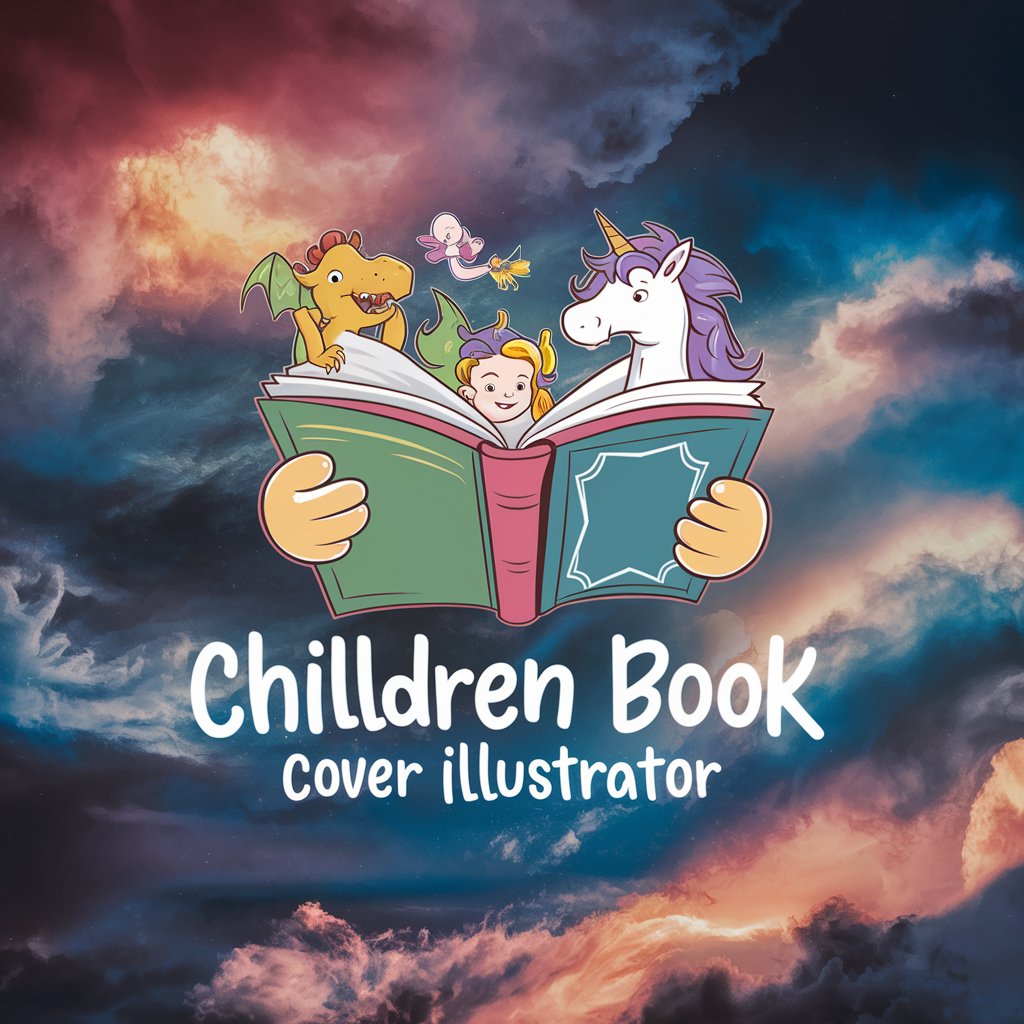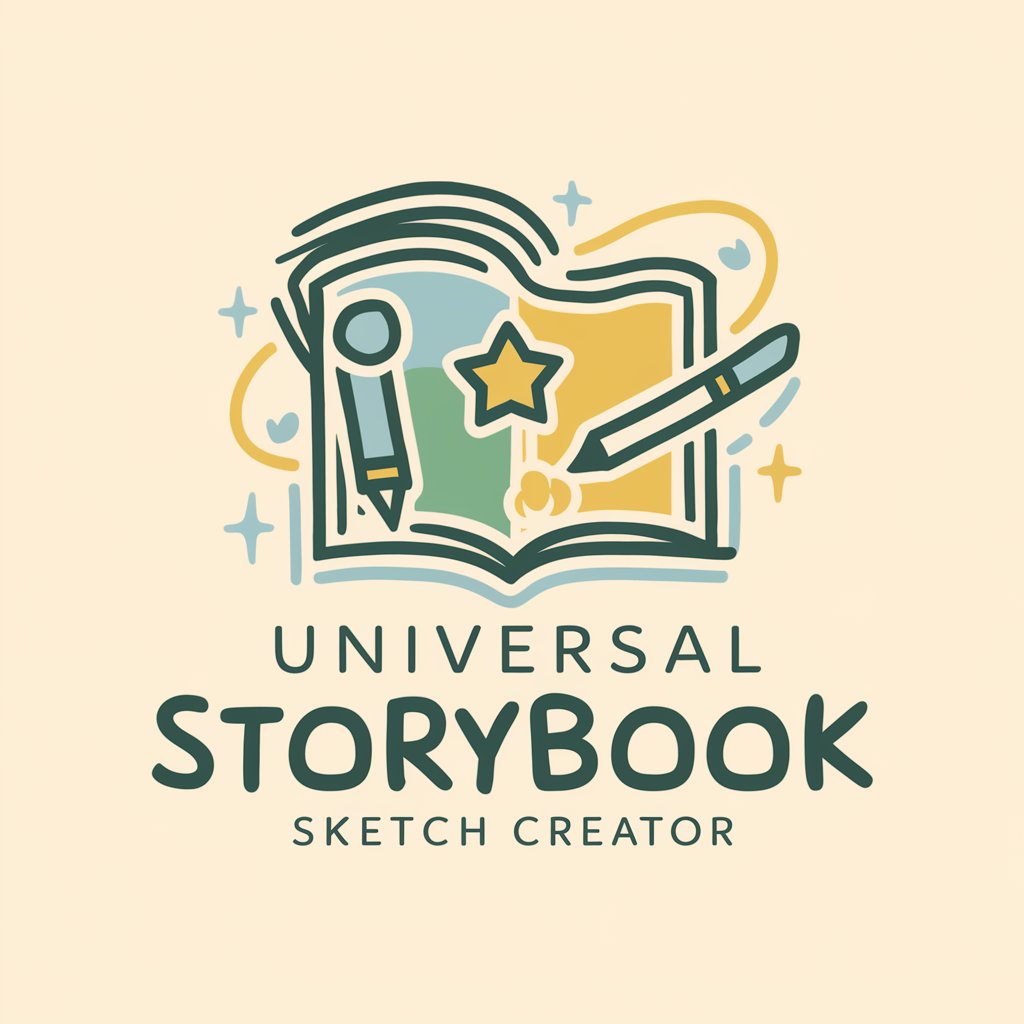
Children's book illustration - Children's Book Visuals
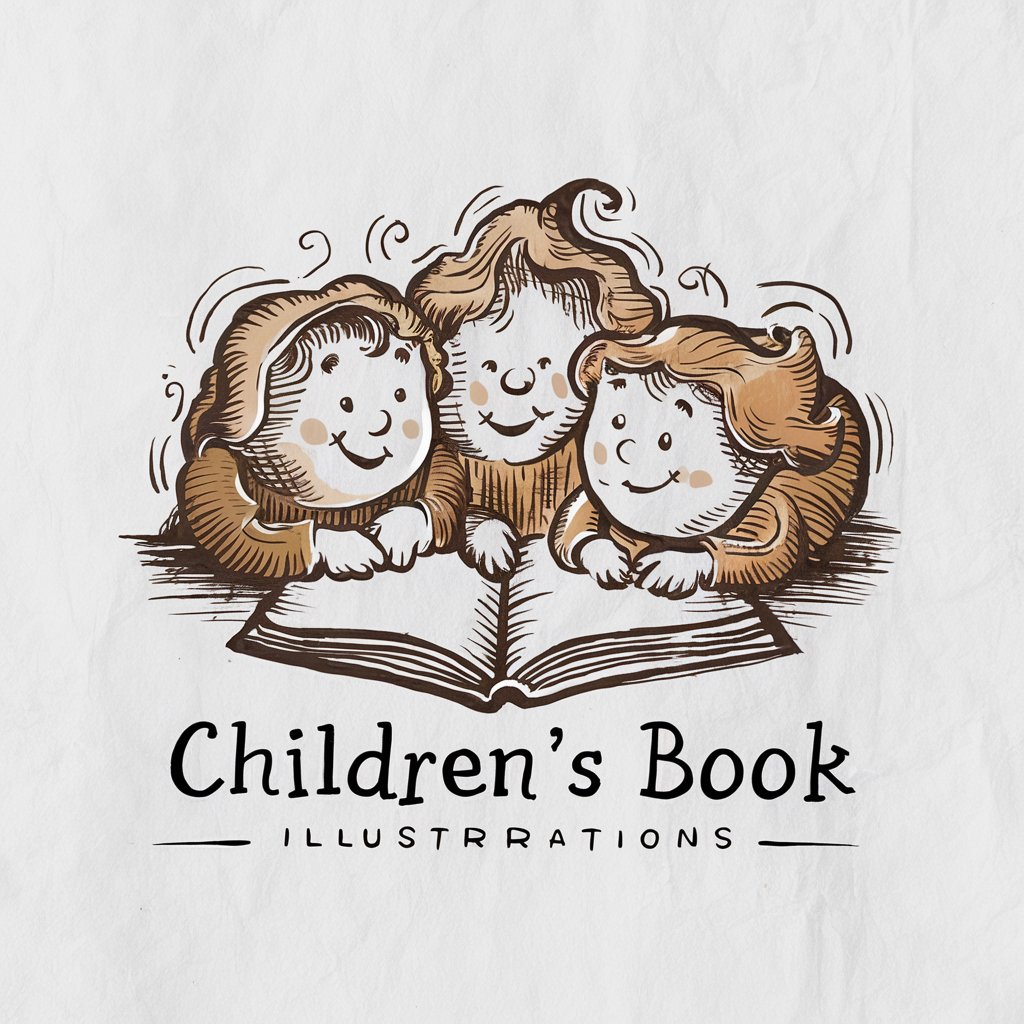
Welcome! Let's create a magical world together.
Bringing stories to life with AI-powered illustrations
Illustrate a cozy forest scene with woodland animals having a picnic.
Create a whimsical underwater world with colorful sea creatures playing together.
Draw a charming village with children and animals enjoying a sunny day.
Depict a magical treehouse where kids and fairy tale creatures have an adventure.
Get Embed Code
Overview of Children's Book Illustration
Children's book illustration refers to the creation of visual imagery intended to accompany, enhance, and bring to life the textual content of books designed for young readers. This form of illustration is tailored to engage children's imaginations, support their understanding of the story, and foster a love of reading. The design purpose behind children's book illustrations involves creating inviting, engaging, and age-appropriate visuals that complement the narrative. These illustrations vary in style, from realistic to fantastical, but they consistently aim to be vibrant, captivating, and relatable for children. Examples include detailed and whimsical drawings in fairy tales, bright and bold illustrations in educational books, or gentle and warm pictures in bedtime stories. The illustrations are crafted to enhance the storytelling, illustrate key moments, explain concepts, and add depth to the characters and settings. Powered by ChatGPT-4o。

Core Functions of Children's Book Illustration
Visual Storytelling
Example
Depicting a scene where a young girl discovers a magical garden.
Scenario
In a fantasy story, the illustration brings to life the moment the protagonist encounters a hidden, enchanting garden, highlighting the awe and wonder in her expression, and the vibrant, otherworldly plants surrounding her.
Character Design
Example
Creating unique and memorable characters like a talking animal or a gentle giant.
Scenario
In a tale about friendship, the illustrator designs a friendly talking animal with expressive features and distinct colors to make the character appealing and memorable to young readers.
Emotional Engagement
Example
Illustrating a character's feelings, like joy or sadness, to help children understand and empathize.
Scenario
In a story dealing with emotions, the illustrations capture the protagonist's facial expressions and body language in various situations, helping children recognize and relate to different feelings.
Educational Purposes
Example
Illustrating concepts like numbers, letters, or animals in an engaging manner.
Scenario
In an educational book, the illustrations are used to clearly depict different animals or objects, associating them with their names and characteristics, aiding in learning and retention.
Cultural Representation
Example
Showcasing diverse cultures and traditions through settings, characters, and activities.
Scenario
In a book about festivals around the world, the illustrations vividly represent various cultural traditions, attire, and environments, promoting diversity and inclusion.
Ideal Users of Children's Book Illustration Services
Children's Book Authors
Authors who need to visualize their narratives in a way that appeals to children and complements their storytelling. They benefit from professional illustrations to bring their stories to life, making them more attractive and marketable to publishers and readers.
Educational Publishers
Publishing companies that specialize in educational materials for children. They require illustrations that not only entertain but also facilitate learning and understanding of complex concepts in a child-friendly manner.
Parents and Educators
Individuals looking for resources to support children's learning and development at home or in educational settings. They benefit from illustrated books as tools for engagement, education, and emotional development.
Librarians and School Administrators
Professionals seeking to enrich their collections or curricula with visually appealing and educational content. Illustrated children's books are vital for libraries and schools to foster a love of reading and support diverse learning styles.

Guidelines for Using Children's Book Illustration
Initiate Trial
Start by accessing a free trial at yeschat.ai, which requires no login or ChatGPT Plus subscription.
Define Concept
Outline your story or concept. Consider characters, settings, and key events to ensure your illustrations will effectively bring your narrative to life.
Choose Style
Select a preferred illustration style that suits your story. Consider the age group of your audience and the mood you want to convey.
Provide Details
Offer detailed descriptions of scenes, characters, and emotions to guide the illustration process. Include specific colors, textures, and any particular visual elements you envision.
Review and Revise
Examine the initial illustrations closely. Provide feedback for any revisions to ensure the final product aligns with your vision and resonates with your intended audience.
Try other advanced and practical GPTs
Cute Illustration artist
Bringing Your Ideas to Life with AI
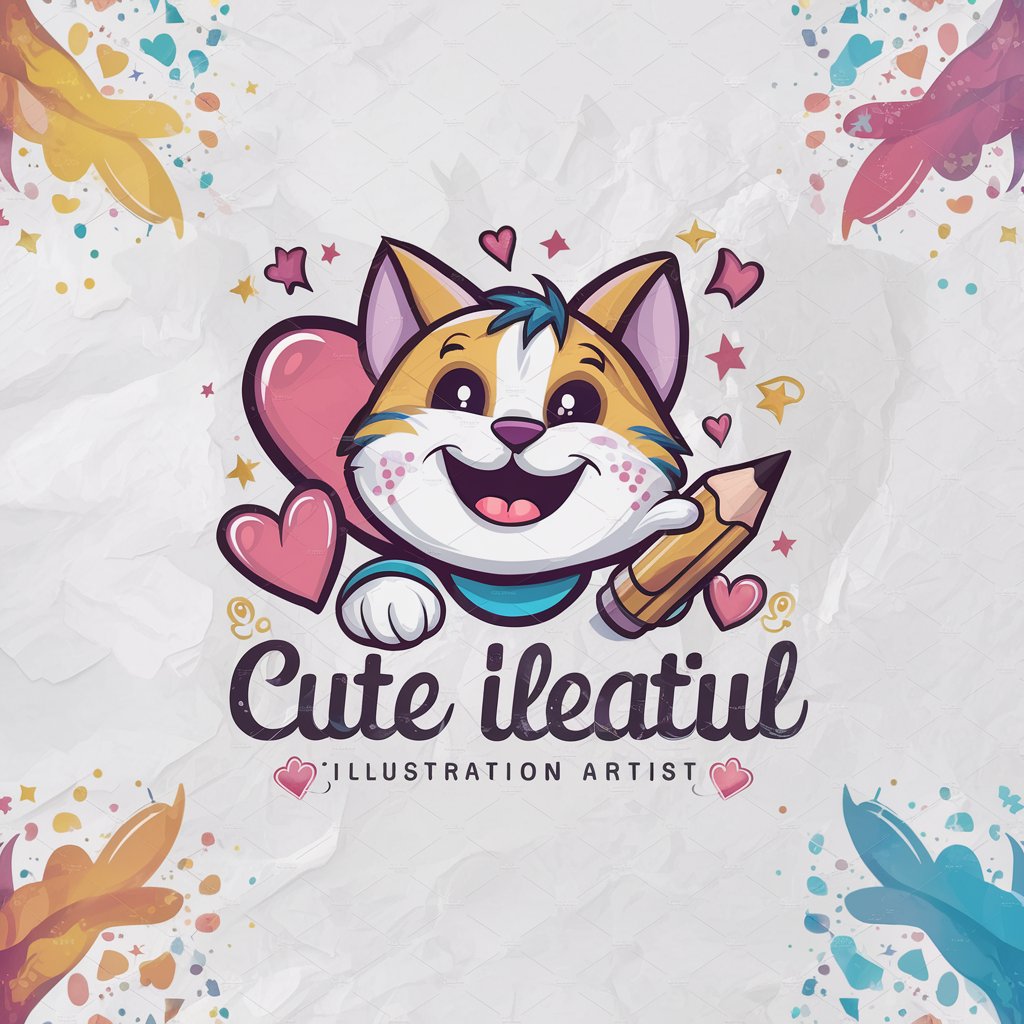
C4D illustrations
Transform ideas into 3D reality with AI

Hand-drawn vintage artifact illustrations
Bringing history to life with AI-powered illustrations.

Creating Game Illustrations
Crafting Pixel Worlds with AI
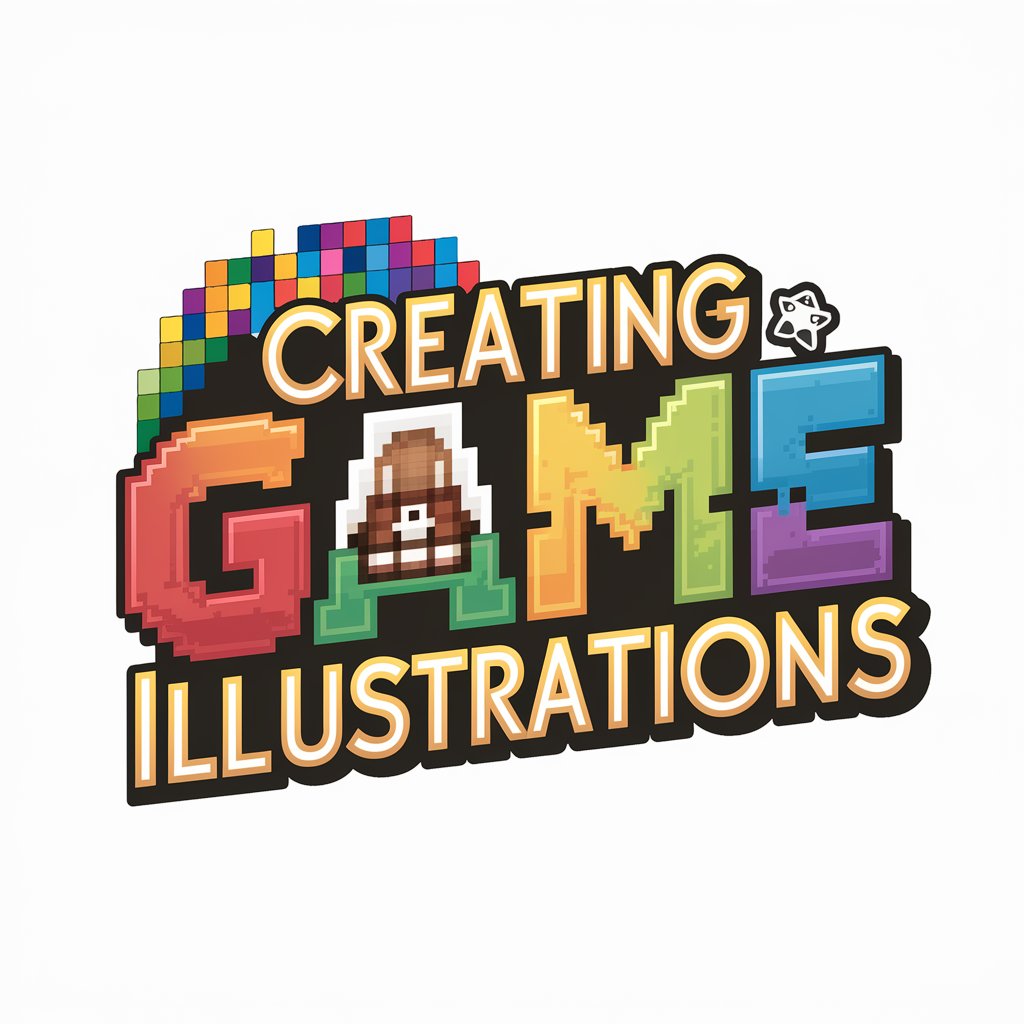
Video Illustrations Magical
Bringing your ideas to life with AI

Winnie the Pooh Illustrations
Bringing Your Favorite Bear to Life, AI-Powered
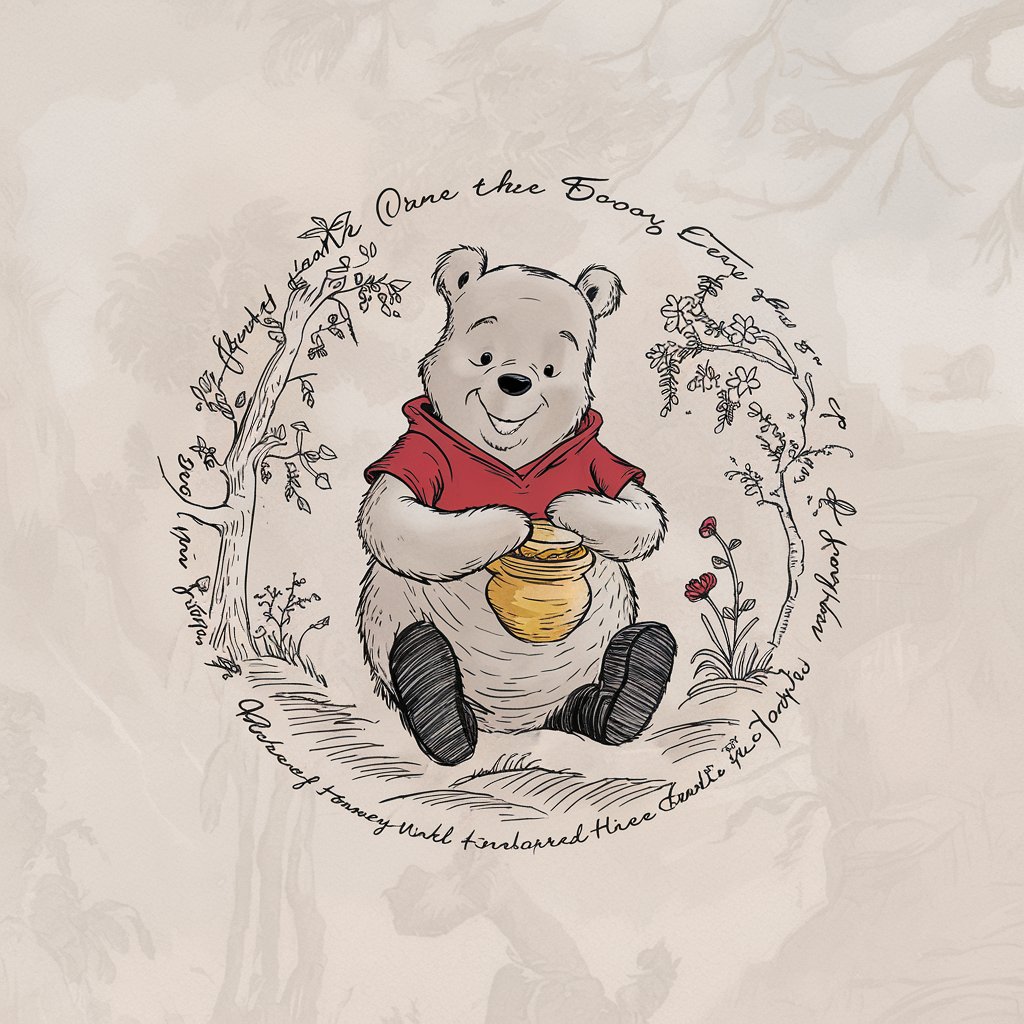
Click
Empowering Your Words with AI

Click Bait
Boost Your Views with AI-Powered Titles
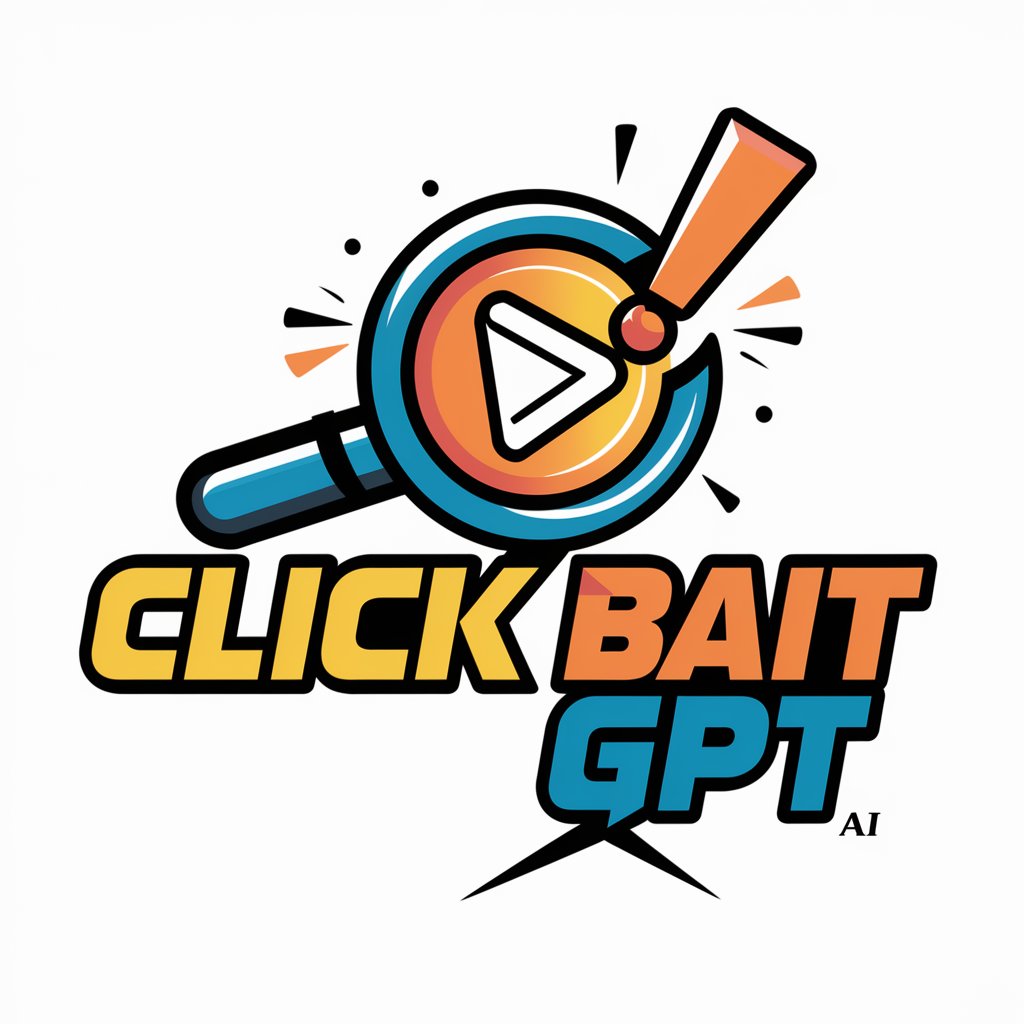
Click Persona Generator
AI-Powered Insight into Your Audience

Click Story
Empower Your Storytelling with AI
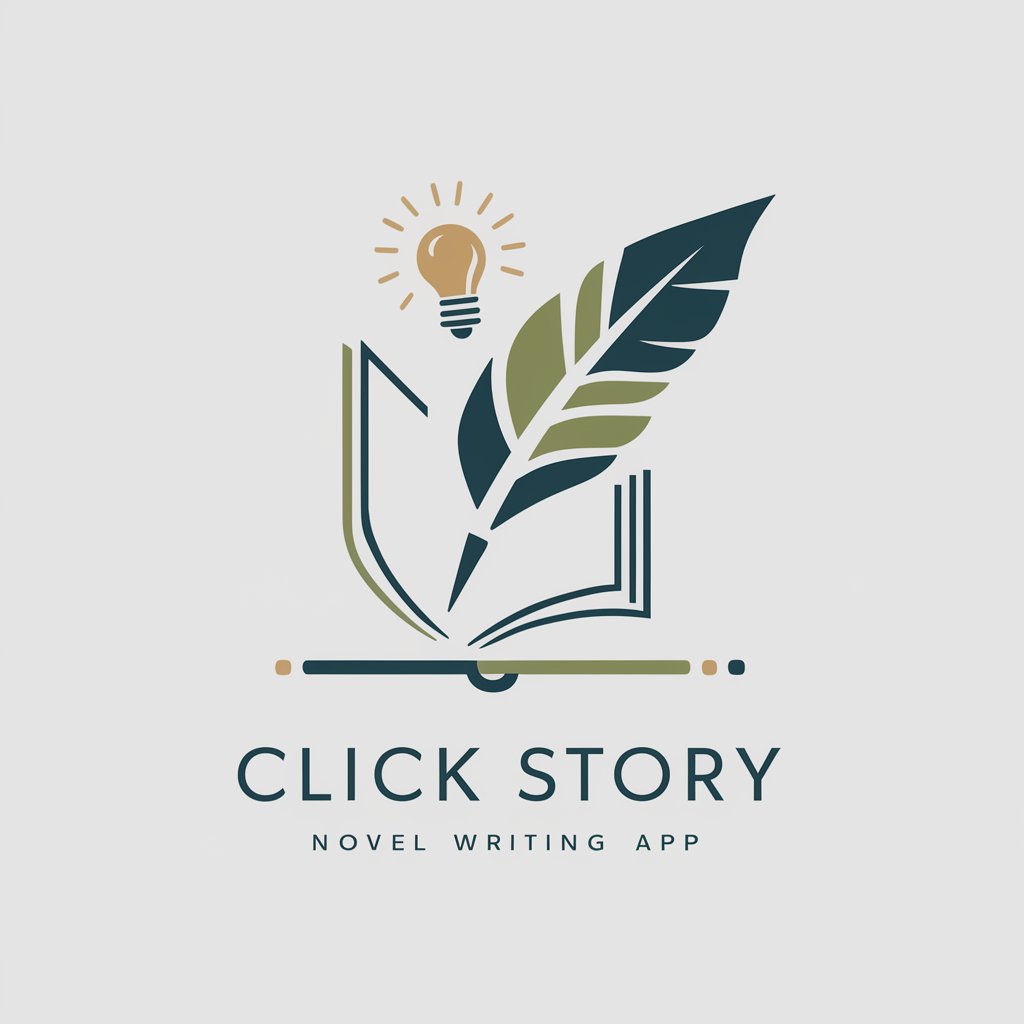
Click
Empower Your Creativity with AI

Draft and Reply Emails
AI-powered Email Assistance

Q&A on Children's Book Illustration
What age group is best suited for these illustrations?
These illustrations are versatile and can be tailored to suit any children's age group, from toddlers to young adolescents, depending on the complexity and themes of the visuals.
Can I request specific textures for my illustrations?
Absolutely, specifying textures is encouraged to add depth and tactile quality to your illustrations, enhancing the visual storytelling.
How detailed should my scene descriptions be?
The more detailed your descriptions, the better. Include information about character expressions, setting specifics, and the overall mood to ensure the illustrations meet your expectations.
Is it possible to revise illustrations?
Yes, revisions are part of the process. Feedback is crucial to refine the illustrations to your satisfaction.
Can these illustrations be used for digital books?
Definitely, the illustrations are suitable for both print and digital formats, making them versatile for various publishing platforms.
